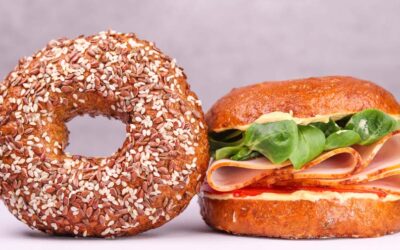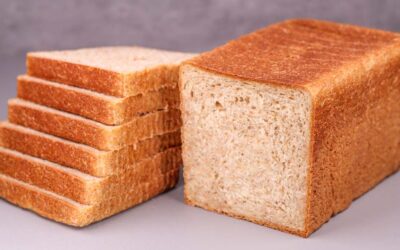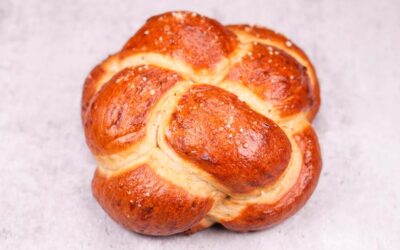Khachapuri is a traditional Georgian cheese bread. Its shape resembles a boat. With the cheese representing the sea and the egg yolk representing the Sun.
To me it represents a chance to tuck into an abnormal amount of delicious molten cheese.
It is topped with an egg yolk and a knob of butter as soon as it comes out of the oven and the whole thing is mixed up into a cheese sauce. The bread is torn piece by piece and used to scoop up the stretchy cheese. Definitely a unique bread experience.
There are several regional khachapuri variations. All made with cheese. This one is Adjaruli khachapuri.
This recipe was one of the first I published on my channel more than two years ago. Since then, I had not made this bread, but my busiest baking buddy reminded me of it, and I just had to make it. And why not make a new video while I’m at it, right?! Call it the new and improved version. I have simplified the process slightly too and the video and audio quality are of course better.
In Georgia they use Georgian cheese which I can not get a hold of where I live. A good substitute is a 50/50 mix of feta and mozzarella. The feta gives and nice saltiness and the mozzarella takes care of the stretch.
You can shape this boat two ways. The way I demonstrate in the video – by first rolling the dough into a boat shape and then filling with cheese. Or you can spread it with cheese before rolling it up which will result in a stuffed crust. The choice is yours. If you go the stuffed crust way, then increase the amount of cheese by 100g (3.5oz).
This recipe makes two khachapuris. If you would like to make more simply multiply the amount of ingredients.
Watch the video down below for detailed instructions.
Ingredients
For the dough –
250g (8.8oz) white bread flour
160g (5.64oz) cold water*
5g (0.17oz) salt
3g (0.1oz) instant dry yeast or 3.6g (0.12oz) active dry yeast or 9g (0.31oz) fresh yeast
10g (0.35oz) olive oil
*To learn more about dough temperature control click here.
The four I use has a protein content of 13%. If your flour is weaker, then you may need to lower the amount of water by 10g (0.35oz).
If you are using active dry yeast, then you may need to let it sit in the water for 10 minutes before adding the other ingredients or else it could take a lot longer to raise the dough.
For the filling –
200g (7oz) crumbled feta
200g (7oz) grated mozzarella
1 egg
To finish –
2 egg yolks
2 knobs of butter
Extra butter for brushing
Method
- Make the filling. Mix the cheeses with the egg. Cover and leave in the fridge for later.
- In a bowl combine the water, yeast, salt, and olive oil. Mix well to dissolve the salt and hydrate the yeast. Add the flour and mix to a dough.
- Tip the dough out on the table and knead for 5 minutes. It will be slightly stickly. Scrape it together occasionally and continue kneading. *Desired dough temperature 25C (77F). If your dough is warmer, then it will ferment more rapidly. If it is cooler, then it will take longer. Adjust proofing time accordingly.
- Cover and ferment for 1 hour.
- Fold.
- Ferment for 1 more hour.
- Divide the dough into two equal pieces. Shape into tight balls. Place on a flour dusted surface and cover.
- Final proof 1 hour. *During this time preheat your oven to 230C (445F) fan off. Preheat a solid surface on which to bake on. Be it a pizza steel, stone, cast iron skillet, or thick metal tray.
- Shape the khachapuri. Roll the dough ball to a large oval shape. Roll the top edge three times. Repeat with the bottom. Finally, twist the two ends together. Fill with half of the cheese filling. I baked them one by one, so the other dough ball was placed in the fridge to slow down fermentation.
- Bake for 14 – 15 minutes.
- As soon as the bread comes out the oven brush the edge with butter. Place a knob of butter on the cheese along with the egg yolk. Mix it well. The yolk will cook in the hot cheese as you mix it.
Tuck in! It’s really hot so be careful!
Keep in mind that the conditions in each kitchen are different, so fermentation times may vary for you. It is up to the baker to control the bread and react accordingly.
Your oven may be different too, so your baking time may vary.
Watch the video here



